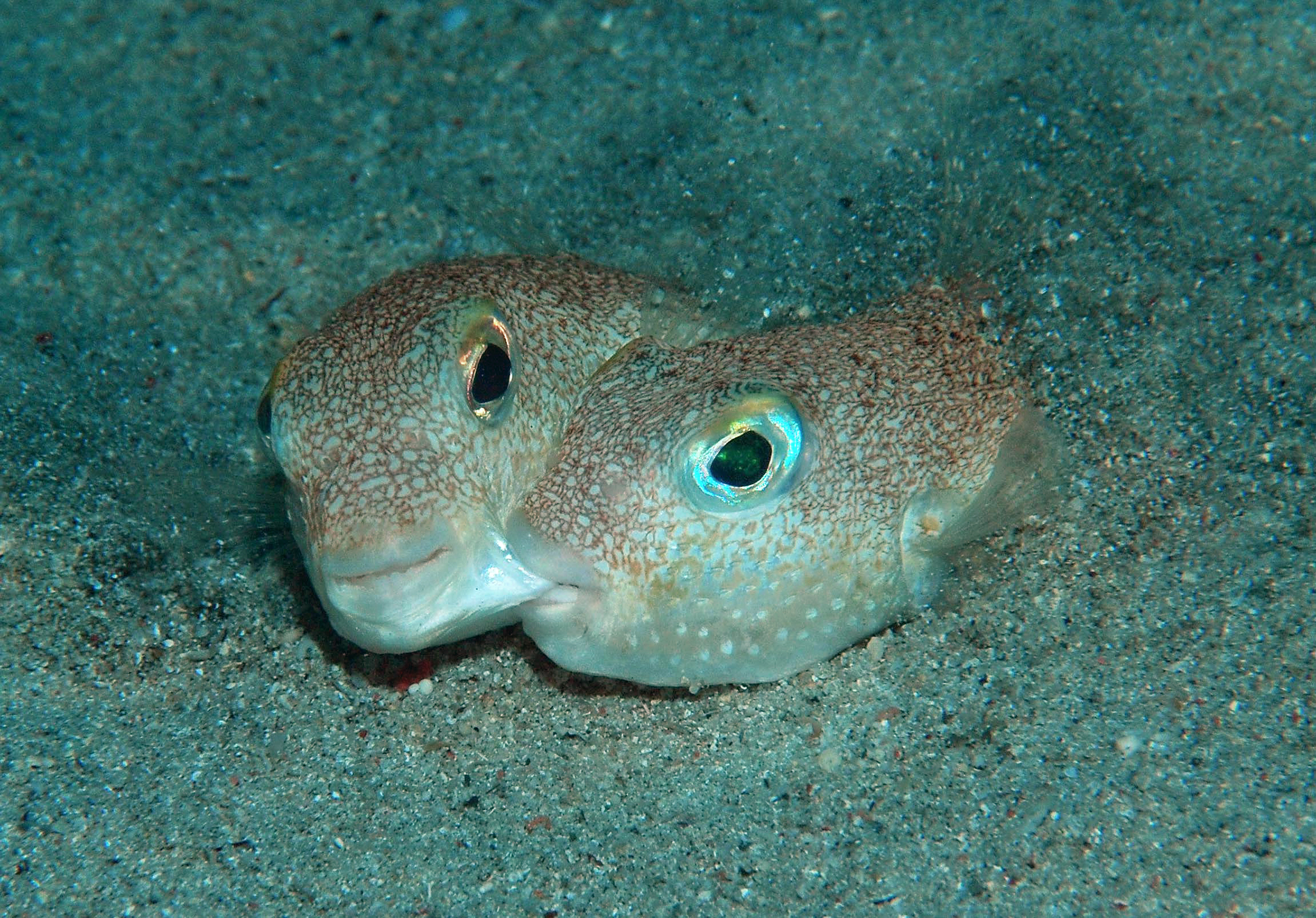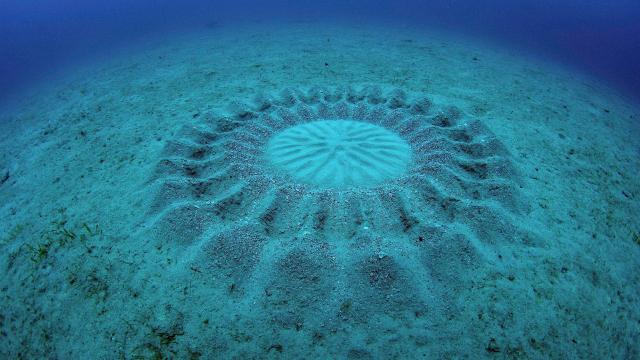Let’s hear it for newly-discovered species with interesting sex lives! A pufferfish that builds complex circular spawning nests and a frog that gives birth directly to live tadpoles have been picked as two of the International Institute for Species Exploration’s “top 10” new species of 2015.
Top image: A spawning nest (mystery circle) of Torquigener albomaculosus found at 26 m depth on a sandy bottom along the south coast of Amami-Oshima Island in the Ryukyu Islands; Photograph: Yoji Okata | used with permission.
The Fish: Torquigener albomaculosus

Divers actually found the nests long before they noticed the fish that built them. In the mid-1990s, divers off the coast of Japan noticed two-meter wide patterns of wavy concentric circles on the seafloor. In 2012, ichthyologists discovered the 5-inch long male pufferfish responsible for the patterns. The male spends days building the circles by digging in the sand with its fins and its body, then courts females in the center. After they spawn, he cares for their eggs until they hatch, then abandons the nest and finds a new spot to start digging all over again.
Image: A male (right) biting on the left cheek of a female (left) while they were spawning. Photograph: Yoji Okata | used with permission.
The Frog: Limnonectes larvaepartus

Most frogs have external fertilization: females lay unfertilized eggs and males squirt sperm over and around them. But females in this new species of fanged frog from the Indonesian island of Sulawesi keep their eggs inside their oviducts and give birth directly to tadpoles. That means these frogs have internal fertilization — but herpetologists aren’t quite sure how they, you know, do it, since the males don’t have a penis-like organ. A penis definitely isn’t a requirement, as most birds manage internal fertilization just fine without one. But clearly, more research is necessary.
Image: Limnonectes larvaepartus: male (left) and female (right) photographed in the field on Sulawesi; Photograph: Jimmy A. McGuire | used with permission.
[Sources: Kawase et al. 2013; Matsuura 2015; Iskandar et al. 2014][International Institute for Species Exploration]
